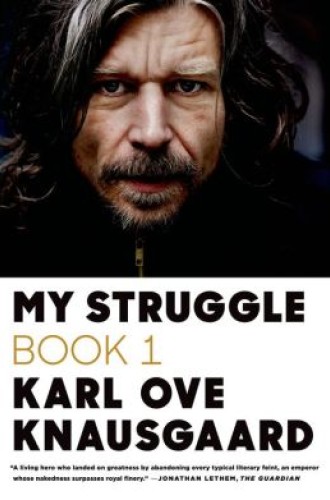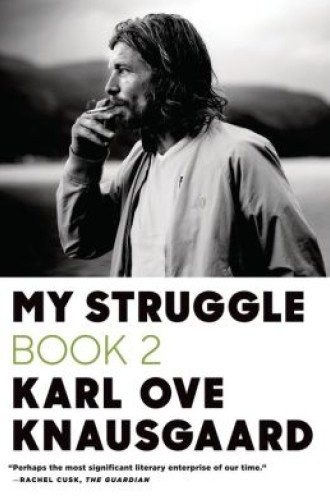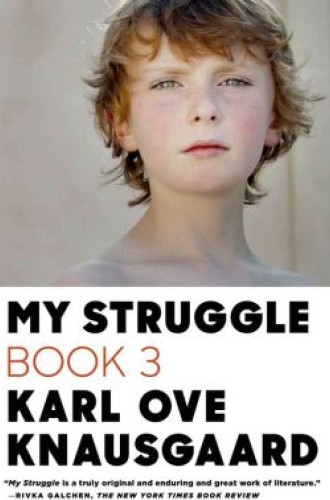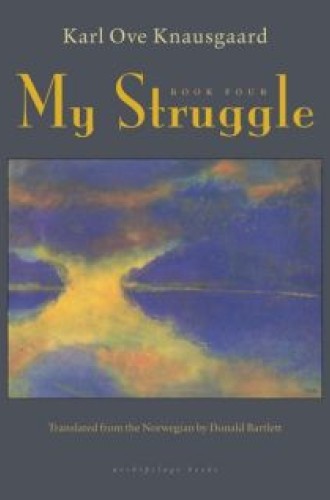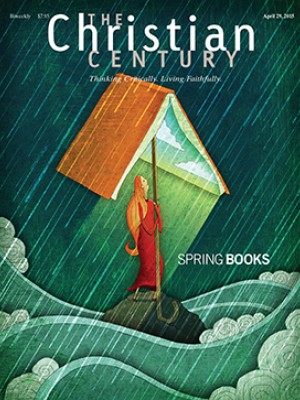The Proust of Norway

I read unselectively. Even the most extraneous book may one day be thrown into the sausage of a sermon. I’ve never known an interesting preacher or a persevering pastor who was not also a ravenous reader.
For some reason a book I read repeatedly is Marcel Proust’s Remembrance of Things Past. I am still uncertain why self-absorbed Marcel appeals to me. Proust is against everything I believe in, goes places I would never dare, and is far too microscopic in his observations of fin de siècle Parisians. Still, no one portrays the mysteries of time and memory or mocks the deceit of pretense, affluence, and snobbery better than Proust. He is also wickedly funny and, as everyone agrees, the greatest writer of autobiographical fiction.
“It is difficult to believe,” I said to myself at page 2,000 and something of Remembrance, “that there was a time when people were so convinced that writers had something wonderful to reveal that they were willing to expend time reading about a man who takes forever to get out of bed.”
Read our latest issue or browse back issues.
Some hip Norwegian Lutherans and Methodists recently introduced me to the incessantly autobiographical novels of Karl Ove Knausgaard. One in six Norwegians has read at least one volume of his six-part, 3,600-page book My Struggle, which began appearing in English in 2012. My Struggle became so popular in Norway that offices have had to declare “Knausgaard-free days” during which no employee could hang around the break room arguing about his books. Knausgaard forced me to cancel six months of my life in order to fixate on 30 years of his. Critics hail Knausgaard as Proust redivivus, and Proust is his model. He pays tribute to him as early as page 22.
Book one, “A Death in the Family,” stumbles into the messy death of Knausgaard’s cold, detached alcoholic father, who left when Karl Ove was in his teens but returned to drag his sons into his miserable passing. No screaming and abuse here, just inarticulate regret mixed with keep-it-to-yourself longing.
Book two, “A Man in Love,” concerns the rather meandering course whereby Knausgaard married his second wife, Linda, and his fumblings as chief caregiver to his children. His parental aspirations are modest: he aims not to make his children “afraid of their father.”
He wonders at “the immense intimacy” you have with children, “the way in which your own temperament and mood are, so to speak, woven into theirs, such that your own worst sides are no longer something you can keep to yourself, hidden, but seem to take shape outside you and are then hurled back.” Parenthood entails brutal self-exposure, and that’s what My Struggle is all about.
He aches to be a writer, but plotless diaries and essays are the only literature he values. He wants nothing but “a voice, the voice of your own personality, a life, a face, a gaze you could meet.” After all, “what is a work of art if not the gaze of another person . . . at the same height as our own gaze? Art cannot be experienced collectively . . . You meet its gaze alone.”
In book three, “Boyhood,” he goes back to his childhood, answering some of the questions he tucked into our minds in book one. Linear chronology means little to Knausgaard; he is fixated on the present. “The past is now barely present in my thoughts. . . . The main reason for that is our children, since life with them in the here and now occupies all the space. They even squeeze out the most recent past: Ask me what I did three days ago and I can’t remember.” Children force us to take time for them and to attend exclusively to the moment.
Book four is due out this month. This installation focuses on his late teen years, especially one year when he taught children not much younger than himself in a town in northern Norway. The book reveals something about his life after his parents got divorced and about his father’s spiral down into alcoholism. Knausgaard himself drinks heavily, uses drugs, tries to lose his virginity, and gets into a bit of trouble. This volume is the funniest of those released so far in English.
Books five and six have yet to make it into English. When they do, I’ll go on a six-month leave and read them too. Help, I’m addicted to the work of Karl Ove Knausgaard.
As a result, I know an awful lot about his children, groceries, spats with friends, and deliberation on what to eat for supper. He reports on a debate about the virtues of a crème and pineapple dessert and offers a snippet of a philosophical conversation with his friend Gair. Karl Ove (it’s permissible to refer to someone by their first name when you have been this intimate for this long) gets 200 pages out of a rather inconsequential argument over what to do for New Year’s.
His writing style is blogger-like: it’s Norwegian reality TV with a bottle of beer and lots of snow and sarcasm. One asks, “Karl Ove, is this interminable description of you at a gas station, or these 30 pages on a toddler’s birthday party, supposed to be revealing? Am I just too American to get it? Or too old? Or is there nothing here to get?” I began secretly to want Karl Ove to do something touchingly good or spectacularly bad—anything to deliver me from self-rumination on the utterly mundane.
And yet there is something addictive about My Struggle. After a few hundred pages, you begin to trust Knausgaard. It’s not that he is incapable of dissembling; it’s just that he probably doesn’t worry enough about your reactions to take the trouble to lie. His candor and directness are disarming. Like Proust, he reports thoughts that I might have had but would never write down. The writing is sparse and free of pretense, hyperbole, and sentimentality. He shows no interest in politics or what’s in the news. We come to believe that we really know the truth about him. It’s not very dramatic or stirring truth, but it is still truth. His frank display of banality is experienced as disarming transparency. We want to stop, doubting that this reading is doing us much good, but we can’t. Unembellished candor has its own magnetism.
The sheer Proustian bulk of Karl Ove’s work is off-putting for many readers, to say nothing of the title: My Struggle is Min Kamp in Norwegian, Mein Kampf in German. Surely the title is meant as deliberate outrage. But perhaps he is being ironic: if his life is Kampf, it is a low-key battle.
Karl Ove seems to have a fairly charitable disposition, though he is full of self-doubts and collateral damage from his childhood. In his love for Linda, I defy you to find romance, or maybe that’s just how Norwegians do it. His adolescent discovery of his sexuality is refreshingly devoid of the usual Sturm und Drang, though the periodic appearance of alcohol, just when we thought Karl Ove was going to grow up and learn something, is disturbing.
One critic sniffed that if you believe that there is dignity and revelation in each cornflake, then you’ll love Karl Ove. But I love the way that he risks being boring, not out of self-importance but as an invitation, saying in effect: “Here’s my ordinary, blah Norwegian life measured out in teaspoons, whereby I will capture your attention and make you wonder about the significance of your life.” Even though he reports on only a tiny fraction of his life (and often out of chronological order), somehow he bestows nobility upon ordinariness by narrating it so honestly.
Though he says he is virulently “anti-ideology,” when he dares to turn from his fixation on the quotidian, he offers flashes of arresting insight: “It is not the case that we are born equal and that the conditions of life make our lives unequal, it is the opposite, we are born unequal, and the conditions of life make our lives more equal.” The principal inequality among us, according to Karl Ove, is our willingness to press on, to struggle. But the struggle is not to reach some goal; the struggle is its own reward.
Much of Karl Ove’s wisdom is conventional, the same trifles one would expect from any European, university-educated, secular modern man: “Meaning is not something we are given, but that which we give. Death makes life meaningless because everything we have ever striven for ceases . . . and that makes life meaningful, too, because its presence makes the little we have of it indispensable, every moment precious.”
Faith? There’s not much of it in Karl Ove’s world, though he served as a consultant for a Norwegian translation of the Bible and at one point reports having attempted to write a novel about Abraham, titled “The Bible in Norway.” I have no idea what to make of that. Although Linda thought the novel was “absolutely fantastic,” he decided it was trash and abandoned it. (Karl Ove’s attempt to write his life as an anti-epic of epic proportions is faintly biblical, come to think of it.)
Art trumps even parenting for Karl Ove: “When I look at a beautiful painting I have tears in my eyes, but not when I look at my children. That does not mean I do not love them, because I do, with all my heart, it simply means that the meaning they produce is not sufficient to fulfill a whole life.”
Well, what is sufficient? Valiant and pathetic, lively and soporific, meaningful and a big waste of time—this is Karl Ove’s life. “Meaningful, meaningless, meaningful, meaningless, this is the wave that washes through our lives and creates its inherent tension.” It’s up to us to wrestle some significance from life’s struggle.
He calls sloth the greatest of all sins, “because it is the only one that sins against life.” And what is life? Kampf. Dogged striving seems to be about all there is: “Everyday life, with its duties and routines, was something I endured, not a thing I enjoyed, nor something that was meaningful. . . . I always longed to be away from it. So the life I led was not my own. I tried to make it mine, this was my struggle.”
He goes on to say: “The only thing I have learned from life is to endure it, never to question it, and to burn up the longing generated by this in writing.”
Is this all there is? Can we hope for more? I’d argue that Karl Ove longs not just for meaning or enduring significance, but for redemption. But when one doesn’t expect to be addressed by any voice outside of the ego, if there is no meaning other than that which we manage to chisel out of the everyday routine, then all of life is in a minor key. There is no one to help us but us.
As Charles Taylor has shown in books such as Sources of the Self, until the modern era humans have seen life in light of the work of God or assumed that life had an innate shape. In modernity life became a project of self-construction and self-actualization. We arrive in the world as tabula rasa, with only possibility and potentiality, and must struggle to constitute ourselves through our astute choices and decisions. Many in my congregation bend under the weight of that task: kampf. It’s solely up to us to devise a reason to get out of bed in the morning.
In his lonely, self-constructed struggle, Karl Ove differs from his mentor Marcel. The most luminous passage of Remembrance of Things Past comes in the final 50 pages when Proust, having microscopically skewered his fellow Parisians for their hypocrisy and banality and having come face-to-face with his mortality, senses a call to be a writer. He will write. He will truthfully describe his world, and he will make the rest of us linger with him and pay attention. This strong sense of vocation is like a redemptive summons.
Perhaps in the next three volumes Karl Ove will be rescued, saved from himself and for an undertaking greater than himself. With God, all things are possible. As a believer in a benign external agent who creates, who raises the dead, who summons us and gives us worthwhile work to do for someone other than ourselves, I wanted to take Karl Ove out for a beer, and give him the good news about a God who redeems life from the pit.


